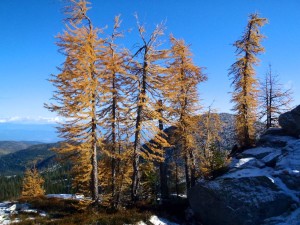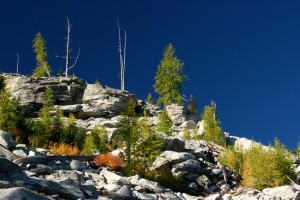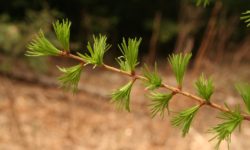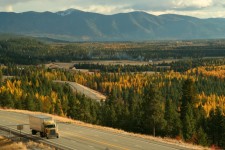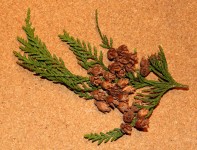As autumn begins, a golden color will highlight timberline as alpine larch turn from a light green to a golden yellow. Turning color and losing its needles a month earlier than lower elevation western larch, the alpine larch ushers in autumn in the high country.
Alpine larch eek out a living in sites too cold, too rocky, too boggy or too snow-covered for other trees, such as subalpine fir, whitebark pine and Engelmann spruce. Other high-elevation trees have a broader distribution than alpine larch, which only exists above 5,000 feet elevation in portions of the Rocky Mountains and Cascade Range.
Within the Cascades, alpine larch grow in a 120-mile north-south stretch and in the Rockies, its distribution is limited to a 430-mile stretch between central Idaho and just north of Lake Louise, British Columbia.
The rugged terrain the alpine larch exists in makes the often park-like groves of golden-yellow trees a sight to remember. Being a deciduous conifer helps the tree withstand the extreme conditions that prevail at high elevations. Without any needles in the winter, hurricane-force winds have less surface area to pummel and for snow to collect on.
A deep root system anchors alpine larch in rock crevices to help them withstand the winds and snow. Young saplings concentrate growth on roots before extending upwards significantly. An eight- to sixteen-inch tree, which may be 16-25 years old, can have a taproot 16 to 24 inches deep. Growth during the first 20-25 years is focused on the root system because a short trunk is protected by the snowpack.
Rarely does one find an uprooted alpine larch blown over by gale-force winds, but will instead finds trunks snapped off and exposing the hollow, rotten inside of old trees.
Dense wood helps alpine larch endure the strong winds and avalanches that batter the high country. Before a tree reaches five inches in diameter and twenty feet tall, it can withstand being flattened in annual snowslides before straightening again in the summer. Once larger, the strong trunk and lack of foliage makes the tree resistant to breakage in snowslides.
Growth in avalanche chutes is common and helps stabilize snow loads and reduces the severity of avalanches.
The lower reaches of avalanche chutes can be one place where alpine larch extend down to the uppermost reaches of western larch. Several features distinguish the two larches.
Alpine larch exhibit long, spreading limbs that form a broad crown, whereas western larch have a narrow crown.
Upon close inspection, the new twigs and buds of alpine larch are covered in woolly hairs, whereas new twigs of western larch appear smooth. The needles of alpine larch grow in clusters of 30-40 whereas those of western larch grown in clusters of 15-30. Needles of both larch grow singularly on the first year’s growth.
The needles of alpine larch are square in cross-section while those of western larch are triangular in cross-section.
While western larch attain greater heights, alpine larch can attain sizable proportions for the rough terrain in which it survives. In sheltered basins, mature alpine larch can attain heights of 95 feet when 500-700 years old. The tallest alpine larch exists in the Cabinet Range of Montana at an impressive 152 feet.
Whether short or tall, alpine larch survive in the cold, snowy high country and host a golden finale in autumn that is not to be missed.

